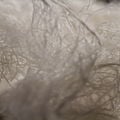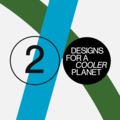Close the loops

When
Where
Event language(s)
Making things and manufacturing processes produce pollution and environmental degradation, draining natural resources.
Single-use and short life-cycle products and packaging generate a lot of waste. During 1950 to 2015, the annual production of plastic has increased nearly 200-fold. The fashion industry alone produces over 92 million tonnes of waste and consumes 79 trillion litres of water per year.
To close the loops, we need to design products that can be fully recycled and with materials that will be reused.
---
Note: According to the current coronavirus guidelines, only the Aalto students and personnel can visit the Otaniemi campus exhibitions without pre-booking. From September 7 onwards, we will organise a few small group visits to the exhibitions at Väre and Vuorimiehentie 2. Visits must be booked in advance. Registration links will be updated here in September. For the time being, we’ll organise all events (except Infrastructure walk) as virtual events.
Meet our team in this game
What’s cooking? Bio-based material experiments by CHEMARTS
From a bio-adhesive to reed panels and cellulose foam, a unique work created in collaboration with designers and biomaterial researchers shows what natural materials can do.

Shimmering Wood by Structural Colour Studio
Nature’s brightest colours – like those found in peacock feathers or butterfly wings – are created through microscopically small nanostructures.

Naturally Dramatic
Sustainable costume design is still in its early days. Despite efforts to move to 'greener' processes, stage and film productions still make costumes in traditional ways with little regard for their impact on the environment or employees.

Hidaka Ohmu – The seaweed pavilion
The seaweed pavilion is on display at the A Bloc shopping centre on the Otaniemi campus 16.11-16.12.2020. You can experience Julia Lohmann's Kombu Ahtola algae piece at Annantalo (Annankatu 30, Helsinki) on 20 August 2020–31 January 2021.

FUNGI – an exploration to the future possibilities of Mycelium as a material
Mycelium is seen in the field of design as a potential future material in various applications.

Capturing microplastics and pharmaceuticals from waste water
Hormones and other pharmaceuticals ending up in bodies from natural waters are a globally significant environmental problem.

ONLINE: Biotech Talks I – NewSilk 2020
'Designing materials on molecular level – what does it mean for researchers, designers - and for the globe?’

The targets to reach
We need to know the origin of materials, how they are processed and used, and so that they could be recycled and upcycled forever. Monomaterials can be more easily recycled, but we should also develop how multi-material solutions, batteries and building composites for example, that can be totally reused.
Bio-based materials are often considered the best alternative to fossil-based ones. For example, shiny or glittery effects –popular in fashion and design – come from toxic pigments, plastic-based materials or metallic foils. We need bio-based and recyclable alternatives for solvent-based chemicals used in construction, furniture, clothes, shoes, textiles and costumes.
Synthetic biology offers huge potential to mimic nature. For example, a combination of wood fibres and spider silk could rival plastic in the future: the unique material outperforms most of today’s synthetic and natural materials in strength and stiffness combined with toughness. We can also create bioplastic, leather-like materials, and textiles from plant-based raw material sources like fungi and seaweed.

To make necessary changes, we need intelligent and well-designed solutions.
Designs for a Cooler Planet
The event is a part of Helsinki Design Week’s official festival programme, the largest design festival in the Nordics takes place 3–13.9.2020. Designs For a Cooler Planet is also one of the EU's Green Week 2020 partner events.
Farewell to fossil fuels
More than half of our energy still comes from fossil fuels. No single technology can replace our reliance on them.

Close the loops
Making things and manufacturing processes produce pollution and environmental degradation, draining natural resources.

Hack our habitat
Aggressive urbanisation is straining our ecosystem. Rising construction volume causes massive demand for energy-intensive construction materials, and construction already accounts for 39 per cent of the global CO2 emissions.

Consume consciously
Household consumption accounts for more than 60 per cent of global greenhouse gas emissions and 50–80 per cent of total land, material and water use.

Please notice that exhibitions are in four different locations at the Otaniemi campus area which all have different opening hours. Please check specific details from the exhibition pages.
We are monitoring the COVID-19 situation closely, and the event will follow all of the rules and regulations set by the Finnish authorities. The safety of the employees, students and visitors is always prioritised.
Graphic design: Olga Elliot & Milja Komulainen
- Published:
- Updated: